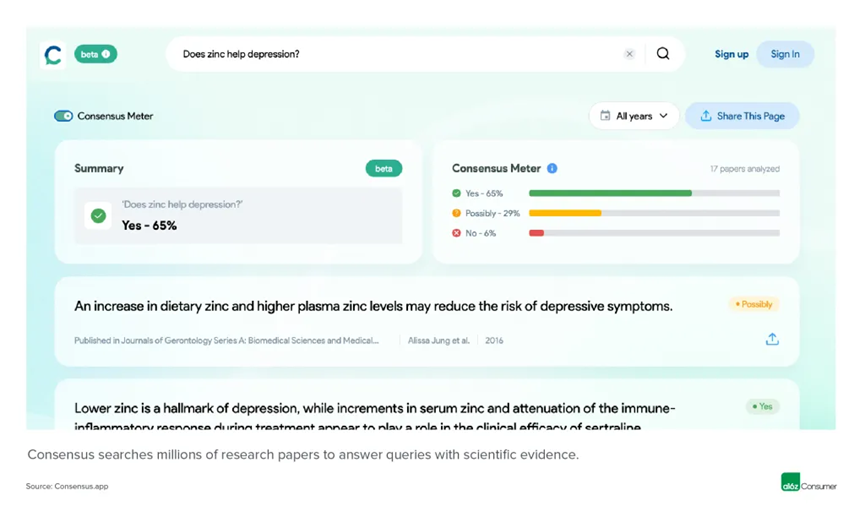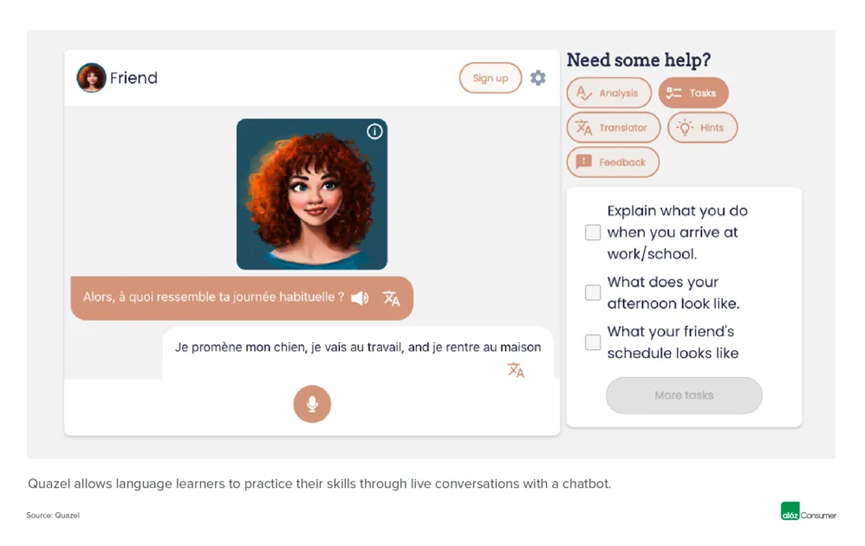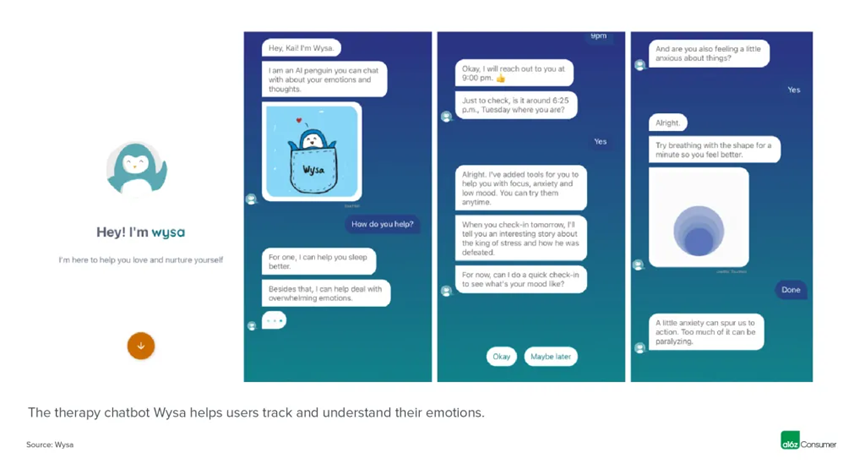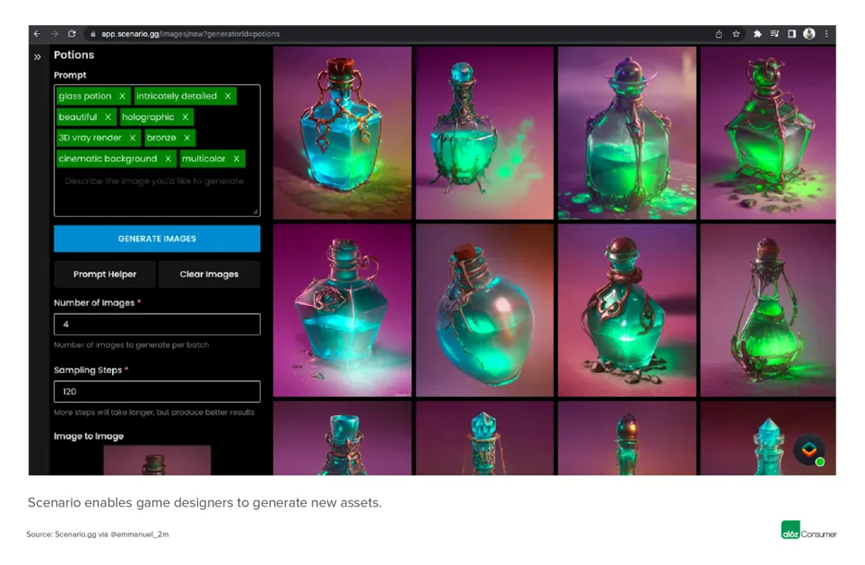a16z: Generative AI, the next consumer-grade platform
Authors: Connie Chan & Justine Moore, a16z
Compiled by: Kate, Marsbit
We have entered the era of generative artificial intelligence. Use cases are everywhere—from writing papers to creating comics to editing films—and the adoption rate exceeds that of every consumer technology trend in the past decade. The text generator ChatGPT surpassed 1 million users in just five days, and tens of millions of consumers have created AI avatars.
Whenever new technology captures consumer attention so rapidly, it raises a question: Is there real value here? We believe the answer is undoubtedly yes. Generative AI will become the next major platform on which founders will build category-defining products.
Just as the iPhone fundamentally changed our daily interactions with technology—giving rise to products like Uber, DoorDash, and Airbnb—generative AI will transform everyday life.
In addition to creating new product categories, AI will enhance existing products, improve consumer experiences, and make scaling easier.
One of AI's most powerful features is its ability to personalize user experiences. Early applications of this approach were in educational technology and search—if you were to explain why it rains, you would use different language for an eight-year-old than for a high school student. We expect this customization to become a core value pillar for many AI-supported products.
Here, we explore the main consumer categories where we see opportunities. In subsequent posts, we will delve deeper into each of these areas and share the questions we pose when evaluating consumer-grade AI companies.

Language models have the potential to fundamentally change one of the core functions of the internet: search.
We have all experienced the struggle of typing a question into Google and then being overwhelmed by a plethora of links, some of which contain contradictory or inaccurate information. It’s like an endless scroll. What if you could get a concise answer written in natural language, with links to more content if you’re interested? LLM-driven search engines make this possible.
Companies like You and Neeva are providing this service for general search queries. Others are taking a more vertical approach: conducting consensus searches in research papers to provide evidence-backed answers, while Perplexity's Bird SQL product targets Twitter charts (e.g., "the most popular tweets about Golden Globe fashion").

This type of search is particularly valuable for product recommendations. Nowadays, making an informed purchase often requires sifting through dozens of links and hundreds of reviews. What if you could get a curated list of options based on your specific needs? Some potential prompts might be: "dog food best for a six-month-old Labrador with a sensitive stomach" or "camel coat for winter in New York under $250."
Additionally, we see tremendous potential for internal search applications aimed at businesses. Most companies now use many communication apps and databases, such as Gmail, Slack, Drive, Asana, etc. Finding a single document, message, or metric across all these tools can be a challenge. Products like Glean allow teams to search across applications, while Vowel enables users to query their video meeting records.

For a long time, educational technology has struggled to balance effectiveness and scale. Build something for the masses, and you lose the personalization that attracts individuals. Build something that fully meets individual needs, and it becomes too expensive to scale.
With AI, this is no longer the case. We can now deploy personalized learning plans at scale, providing each user with a "pocket teacher" that understands their unique needs and can answer questions or test their skills.
Imagine an AI language teacher that can converse in real-time and provide feedback on pronunciation or phrasing. Companies like Quazel and Lingostar are already doing this! We see some products that can teach new concepts or help learners "get unstuck" in almost every subject. Apps like Photomath and Mathly guide students through solving math problems, while PeopleAI and Historical Figures teach history by simulating conversations with famous figures.

In addition to learning specific subjects, students are utilizing AI assistants for their homework. Tools like Grammarly, Orchard, and Lex help students overcome writing barriers and "elevate" their writing skills. Products that handle other forms of content are also gaining popularity in high schools and colleges nationwide—like Tome and Beautiful.ai. For example, AI can assist in creating presentations.

We do not believe technology will completely replace human connection. But it can make us feel less alone. Talking to someone who listens and responds is incredibly powerful, and AI chatbots can play that role.
For early evidence of this, check out the Reddit threads on AI chatbot products like Replika, Anima, and CharacterAI. Many users have found real meaning in their relationships with these bots, spending hours chatting with them each week. The level of engagement is already comparable to Gen Z's use of Snap.
 AI can also enhance or even spark interpersonal relationships. Tools like Millie and YourMove optimize profiles and information on dating apps, while apps like Mumkin help users navigate difficult conversations. Ultimately, we may all have an AI chatbot that reminds us when to reach out to friends and family and prompts us to send the perfect message.
AI can also enhance or even spark interpersonal relationships. Tools like Millie and YourMove optimize profiles and information on dating apps, while apps like Mumkin help users navigate difficult conversations. Ultimately, we may all have an AI chatbot that reminds us when to reach out to friends and family and prompts us to send the perfect message.
Finally, AI can help us connect with those who are not nearby or with whom we have lost touch. Have you ever wished to hear another story from a deceased family member or to get advice from someone you haven’t spoken to in years? Some people have already experimented with this. It’s not hard to imagine a world where we all have an AI-driven "digital twin" trained to write for us, and eventually even speak. For some, this exploration has already begun.

We also hope to see more professional, even clinical, applications of AI chatbots. AI therapists, nutritionists, coaches, and mentors will make personal and professional development more affordable and convenient for millions of consumers worldwide. It’s a digital support system available around the clock, where users can simply open an app to ask questions or start a conversation.
Early studies have found that chatbots can effectively treat mental health issues. Products like Woebot and Wysa have demonstrated clinically validated results and received FDA designations for treating conditions like postpartum depression, chronic pain, and anxiety. Currently, over 25% of adults have diagnosable mental health issues, and we are experiencing a nationwide shortage of therapists; chatbots could be a viable solution for non-acute cases.

Beyond healthcare, we are beginning to see the emergence of other AI tools and coaches specifically designed to assist with particular tasks. InterAlia can help you pick outfits, Prodigy AI can provide career advice, and Poised can enhance your communication skills, to name a few.
It’s not surprising to believe that one day we will all have a personalized chatbot that understands the unique context of our lives. When facing life changes—like divorce, going to college, or having a baby—we will be able to receive advice in any way that resonates with us. We can also seek support or guidance for the goals we are striving to achieve, whether it’s improving our fitness or enhancing our financial health.

Generative AI allows us to turn imagination into reality—when done well, it feels like magic. As we have seen with Lensa, content creation has been the first mainstream use case for generative AI. Remember when your social media was flooded with photos of your friends depicted as superheroes, astronauts, and anime characters?
Portraits are just the beginning. Generative AI products will serve a variety of use cases, from consumers creating content "just for fun" to creators or individual entrepreneurs monetizing their content. We have already seen generative AI tools promoted across nearly all media:
Art—Products like Midjourney and Stable Diffusion allow users to input prompts and styles to receive unique art.
Writing—ChatGPT leads the way ahead of products like Sudowrite and Verb. AI is emerging for more professional types of writing, such as novels.
Video—Descript and RunwayML are expanding from generative video editing to creation, while products like Linum, QuickVid, and Synthesia generate new video content.
Design—Canva has integrated AI, and Microsoft is testing its own AI design platform. They will compete with startups like PhotoRoom and Magician.
Audio—Products like Boomy and Riffusion create music from scratch, while Murf.ai and Resemble provide studio-quality voiceovers.
Over time, we may see more professional-grade generative AI products emerge.
Today, many AI tools have glitches (like a third arm popping up in photos!) or take a long time to process requests. This is fine for most consumers, but it can be more frustrating if you’re trying to monetize content. To serve these advanced users, we expect many companies to add "professional" tiers that offer higher quality services—just as ChatGPT has already done.

AI is likely to play a significant role in gaming, a topic our partners have written extensively about. Generative AI will make it easier, faster, and cheaper to produce high-quality games while allowing players to truly customize their gameplay.
The production costs for the most popular games can reach millions of dollars, sometimes even hundreds of millions. In addition to the game’s storyline, developers need to generate thousands of media assets, from images to 3D models to soundtracks.
The lifeblood of these high-quality, AAA games is the work and vision of human artists. AI is unlikely to completely replace them. However, we believe AI will facilitate the development of these artists and their teams, enabling them to make more effective use of their time and launch games faster and at lower costs.
We have already seen AI tools for creating game assets, such as Scenario and Iliad, as well as platforms that can build entire virtual worlds, like Promethean. You can even use products like Inworld, Charisma, and Convai to generate non-player characters (NPCs).

AI will not only drive the creation of more games but also foster a new type of dynamic and personalized gaming experience tailored to each player's preferences. We have already seen some early examples in text-based games like AI Dungeon and Hidden Door. Imagine entering a game where you can design a complex custom character with just a few sentences. Ultimately, this could expand to an entire virtual world that you can create from scratch.

Tools serving small businesses will become a killer use case for generative AI. There are 32 million small businesses in the U.S., accounting for more than half of the net new jobs created since 2000. They play a crucial role in our economy, but they often face staffing shortages and overwhelm, especially in the recent labor shortage.
AI tools can have an immediate impact on many of these businesses. A helping hand—albeit a blurry one!—is invaluable. AI tools and corresponding use cases are multiplying: Sameday can handle phone calls and appointments; Truelark can manage texts, emails, and chats; Osome can manage back-office tasks; and Durable can create a complete professional website.
Many general content creation tools, such as Jasper, Copy, and Writer, have already gained meaningful traction among small and medium-sized businesses. But we are also beginning to see vertical tools tailored to specific types of business workflows. For example, products like Harvey and Spellbook can help legal teams automate tasks like intake, research, and document drafting. In real estate, Interior AI enables agents to virtually showcase their properties, while Zuma helps property managers convert leads into booked tours.
In this space, one of the most productive verticals is e-commerce. Most of these businesses operate entirely online, making it easy for them to integrate AI tools into many parts of their workflows. In a world where customer acquisition costs are rising, brands are eager to try products that may help them lower costs, attract more shoppers, and improve retention.
Tools like Flair, Booth, and Bloom help brands create eye-catching product photos, which is crucial when selling products to online shoppers. A static photo of a dress hanging on a rack can be transformed into an image of a woman wearing that dress while walking through a garden. We expect these uses to become highly personalized: a landing page for a sofa will showcase a photo of the sofa in your apartment.
In addition to product photos, brands are creating many types of content that can now be enhanced through AI. Products like AdCreative and Pencil can produce marketing materials for emails or social media, while Frase or Writesonic can write SEO-optimized product descriptions. Ultimately, we hope users will be able to create a complete e-commerce store—along with marketing materials—simply by describing the aesthetic they want and clicking a button.
We are still in the early stages of the generative AI revolution, but we are excited to share how this technology will impact the way we work, learn, create, and entertain ourselves. In the coming days, we will delve deeper into the impact of AI on these consumer categories.










